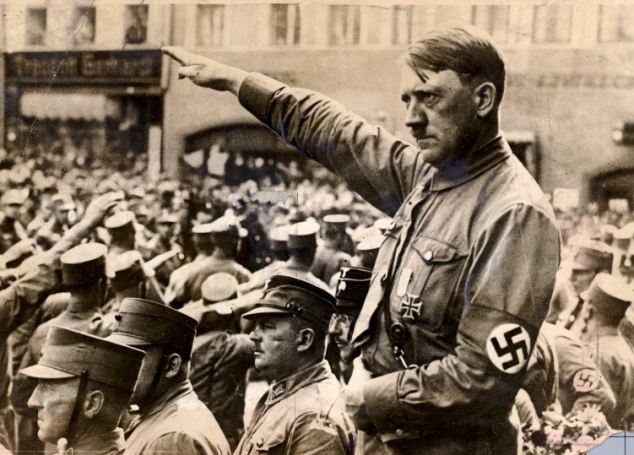
The filmed testimonies given by Hitler’s closest associates about the dictator’s last days before his suicide were believed to have been lost. A German television broadcast them for the first time after they resurfaced in a program aptly titled “Witnesses to the Downfall” May last year.
The remarkable interviews shown in the “Witnesses to the Downfall” came from the people – a group of guards, secretaries and even friends – who surrounded the German dictator when he spent his last days in hiding in his shabby bunker underneath the Reich Chancellery in Berlin when the Red Army closed in Germany.
The “Witnesses to the Downfall” interviews revealed intimate details of the Fuehrer’s life while hiding – from his favorite tea to the love letters he got from his many women admirers to the love song he and his wife Eva Braun, whom he married during his underground stint, listened to repeatedly.
However, the full horror of the weeks before Hitler’s planned death by suicide was not also lost in the “Witnesses to the Downfall”.
His Admirers’ Love Letters
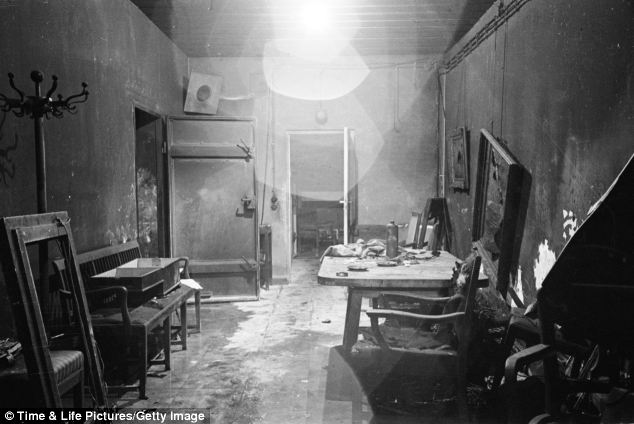
Hitler’s favorite secretary, Tradl Junge, stated in the “Witnesses to the Downfall” documentary how her boss received lots of love letters from his admirers even until his suicide in his Berlin bunker April of 1945.
“That was my first job for him, bringing the post from women who had nothing better to do than write to him. They were love letters, yes,” she said to the cameras.
She further divulged that she saw the German dictator as someone paternal who always was concerned for her welfare and not the statesman. Junge had never been into any of his conferences and was only called for dictations.
As their office in Reichschancellery and in the bunkers of Wolf’s lair or in Berlin were far removed from his quarters, she never witnessed Hitler’s rages though she had heard of them from the gossips of her co-workers.
“My colleagues told me that in the earlier years he talked incessantly, about the past and the future, but after Stalingrad, well, I don’t remember many monologues,” she related then added…
“We all tried to distract him, with talk about films, or gossip, anything that would take his mind off the war. He loved gossip. That was part of that other side of him, which was basically the only one we saw.”
Junge was called to Hitler’s bunker during the last days of war to type his final testament. She very much expected the Fuehrer to defend his actions and explain why he put Germany in that position. That way, she thought, the German dictator would have a way out of the atrocious tragedy he was in. However, to Junge’s surprise, he only repeated the old slogans he uttered during his previous speeches.
Hitler and Braun’s Favorite Love Song
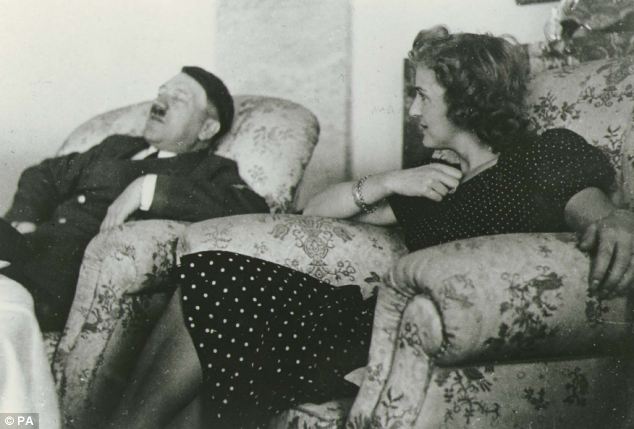
For his part in the “Witnesses to the Downfall”, Hitler’s butler, Arthur Kannberg, revealed how the dictator and his wife, Eva Braun, listened to a record entitled ‘Blood Red Roses’ repeatedly as it was their favorite love song.
“The boss was always particular about the afternoon tea. The cups and silverware always had to be pristine and he insisted that Eva was present at his holiday home on the Obersalzberg for such occasions. Hitler and Eva were very much in love, but perhaps not to the extent that he ever wanted children with her,” he said.
Kannberg related how Hitler gave him gold and silver cigarette cases before his suicide saying the words – “Look after these until we met again” – as he handed them to him.
Kannberg also added how the German leader used to speak about a ‘secret stash’ of treasure he hid near his home in Berchtesgaden though that trove was never found.
Hitler’s barber, August Wollenhaupt, was also among the individuals questioned and he described Hitler as a “genial, soft spoken man” who asked about his family’s welfare every time they met and always wanted to know the recent gossips from the man in the street.
When Hitler Refused Champagne
Other interviews shown in the “Witnesses to the Downfall” program were of Nicholas von Below, Hitler’s aide; the family of his mistress and wife for a day who committed suicide along with him in the bunker they were living in during WWII’s last days, Eva Braun; as well as generals Walther Wenck and Karl Koller.
One Nazi officer named Lorenz stated that after the marriage ceremony of Hitler and Eva Braun in April 29, 1945, a small party was held in the bunker.
“There was champagne but Hitler didn’t drink any. He was concerned about getting his last will and testament down,” he recalled.
Hitler and His Dog, Blondi
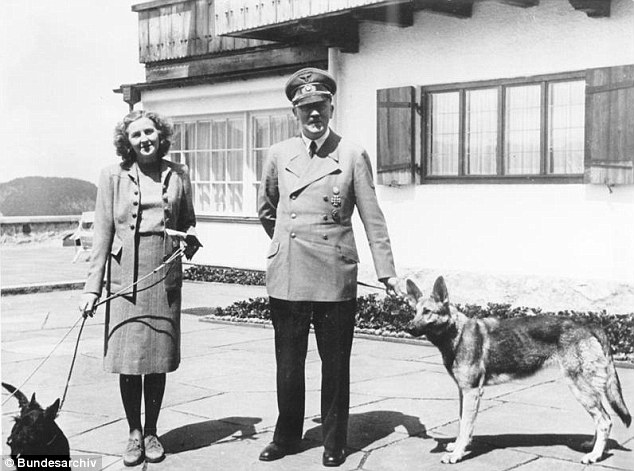
Hitlet had been a dog lover. His beloved dog, Blondi, was an Alsatian. After he received her as a gift, the German dictator developed a strong companionship with the dog. He was so fond of Blondi he even let her sleep in his bunker bedroom during the last days of the war.
However, his love for Blondi was not shared by his mistress-turned-wife Eva Braun. Hitler’s secretary revealed that Eva hated her to the point of kicking her when she was under the table. She preferred her two Scottish terriers, Negus and Stasi, over the Alsatian.
Bernd Freytag, Hitler’s air force aide, related in his interview, which was shown in the “Witnesses to the Downfall” program, how Hitler poisoned his beloved dog.
“He watched as cyanide was slipped into its mouth and its jaw was pushed down to break the glass,” he said.
“Hitler was emotionless. He only wanted to know if it worked and it did. Later the propaganda minister’s wife Magda Goebbels would use the capsules to murder all her children as they slept.”
According to eyewitnesses’ reports, Feldwebel Fritz Tornow, Hitler’s dog handler, killed Blondi’s puppies by shooting them down after the dictator and his new wife committed suicide.
Killed and Burned
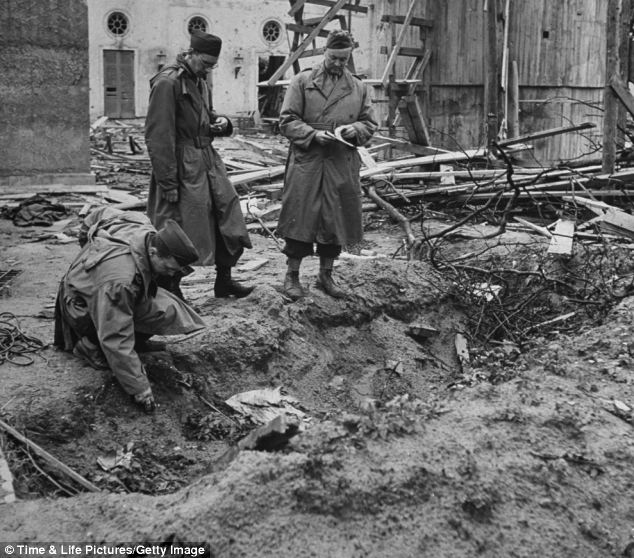
One Colonel Holsten who was present in the bunker when Hitler and his wife killed themselves on April 30, 1945 said in his interview how he saw the bodies of the two being dragged from the bunker up the steps of the Reich Chancellery to the garden where they were soaked in petrol and burned.
“I was frozen,” he said in his interview shown in the “Witnesses to the Downfall” documentary, “then raised my arm automatically one last time in the ‘Hitler Greeting’ to salute him.”
Hermann Karnau, an S.S. bodyguard of Hitler, gave a more detailed account about the Fuehrer and Braun’s suicide.
“I tried to get back through into the bunker through the emergency exit when I saw about 20 metres away from me the bodies of Adolf Hitler and Eva Braun.
They had been set on fire. When I went to the spot early in the evening to try to move them into a hollow in the ground, they disintegrated.
I recognised that it was Hitler from his uniform and his distinctive moustache. I had seen the Fuehrer alive that morning sitting in his favourite wicker chair. Later in the day, before the suicides, I recalled seeing four men arrive with gasoline cans which they said was for the air conditioning system inside the bunker.
As I remembered that the air conditioning system was fuelled by diesel, I personally denied them entrance to the bunker. I relented after Heinz Linge, Hitler’s valet, vouched for them. This was, of course, the petrol that was to be used to cremate the bodies of Hitler and Eva Braun.
I last saw Hitler alive around about 4.00pm that day. I believed that the Fuehrer had been poisoned by his personal physician Dr Ludwig Stumpfegger.”
Erich Kempka, who worked as Hitler’s chauffeur even from the early days of the Nazi movement, was the one who got hold of the needed fuel to burn the two bodies.
This was his story as shown in the “Witnesses to the Downfall’:
“I remember with complete sureness that I was called on April 30 by S.S. Sturmbannfuehrer Guensche while I was in the Reich Chancellery garage asking me to bring over five cans of petrol to the bunker.
Once there Guensche told me the Fuehrer was dead and that he had been ordered to burn his corpse ‘so that he would not be exhibited at a Russian freak-show.’
I then helped carry the corpses. While Linge and an orderly whom I do not remember were carrying the corpse of Adolf Hitler, I carried the corpse of Eva Hitler. I noticed the long black trousers and the black shoes which the Fuehrer usually wore with his field-gray uniform jacket.
The corpses were taken from the bunker to a spot about four to five metres distant from the bunker exit and at this location both bodies were cremated.
Guensche poured the complete contents of the five cans over the two corpses and ignited the fuel. Reichsleiter Martin Bormann, Reichs minister Dr Goebbels, SS-Sturmbannfuehre Guensche, SS Sturmbannfuehrer Linge, the orderly and I stood in the bunker entrance, looked towards the fire and all saluted with raised hands .”
Lost and Found
The interviews, filmed three years after WWII in Nuremberg by an American film unit and carried out by US judge Michael Musmanno (Musmanno aided in the prosecution of the Nazi war criminals and was given special rights to handle the remains of Hitler’s court as the US Navy that time believed the dictator had not really died but escaped to Argentina), were long believed by historians to be lost never to be found again.
However, a part of the interview was found in an archive in Nuremberg late 2012 while the rest of the taped interviews were obtained from the relatives of Judge Musmanno.